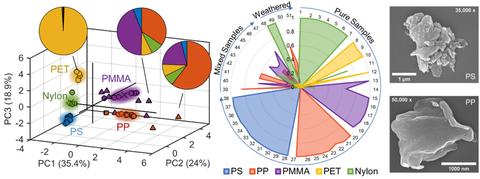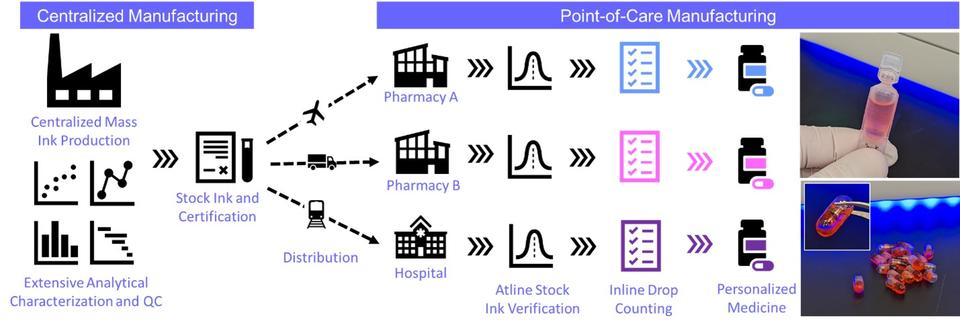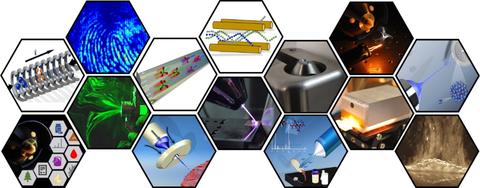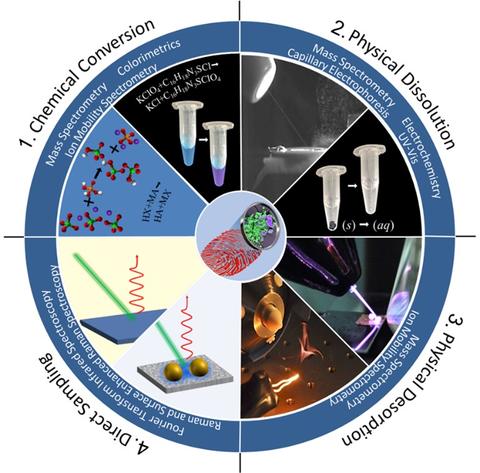Thomas P. Forbes (Fed)
Research Scientist
Tom Forbes is a research scientist at the National Institute of Standards and Technology (NIST). Following an NRC postdoctoral fellowship in the Biochemical Sciences Division, he became a staff scientist and member of the Materials Measurement Science Division. His professional background is in applying thermal-fluid and ion transport phenomena expertise to the development of novel platforms and systems for mass spectrometry and analytical chemistry. His research has encompassed technology development and characterization for a range of applications, including, microfluidic devices for circulating tumor cell isolation, ion sources for mass spectrometric analysis of biomolecules, thermal desorption sampling systems for explosives detection, and electrophoretic separations for forensic examination.
Current Research Areas
Microplastics and Nanoplastics Metrology
Micro- and nano-plastics (MNPs) from degraded plastic waste can enter the food chain and water supplies and accumulate in the environment. The NIST Microplastics and Nanoplastics Metrology Program aims to enable regulatory stakeholders to determine the need (if any) for human health exposure guidelines and environmental regulations for MNPs. This project focuses on analytical methods and instrumentation for the chemical characterization and quantification of MNPs. Complementary chromatography-free mass spectrometry methods, pyrolysis-GC-MS, and spectroscopic techniques are being developed and coupled with machine learning and advanced data analysis for confident MNPs characterization and polymer identification. Preliminary results coupling direct MS with unsupervised machine learning and multiparametric data acquisition can be found in our Analytical Chemistry publication: https://doi.org/10.1021/acs.analchem.3c01897. This project also intersects with the NIST Circular Economy program, aiding in chemical analysis of polymers and textiles.

Point-of-Care Pharmaceutical Manufacturing & Precision Medicine
The COVID-19 pandemic highlighted the need for an agile and resilient pharmaceutical manufacturing and distribution framework. Advancements in manufacturing technologies can aid the move from few rigid centralized manufacturing facilities toward many agile distributed manufacturing and point-of-care manufacturing facilities. We are employing a quality by design (QbD) approach to investigate production technologies (e.g., drop on demand or inkjet printing platforms), the supporting measurement science, appropriate control strategies, and uncertainty in the point-of-care manufacture of narrow therapeutic index drugs for precision medicine. POC manufacturing avenues also take advantage of NIST’s range of chemical analysis capabilities. The developed metrology for the NIST POC Pharmaceutical Manufacturing Program also aligns with efforts in nanomedicine to shift from stockpiling critical vaccines to a network of distributed vaccine manufacturing sites rapid response.

Forensic Chemistry & Public Health
The forensic science efforts within the Materials Measurement Science Division span the intersection between traditional laboratory-based forensic chemistry disciplines, field deployable forensic analyses, trace detection for onsite screening, and public health. Current research directions are investigating technologies and methods related to ambient ionization and surface analysis ion sources, separation techniques, sampling modalities, and fieldable chemical analysis systems. Many of these avenues are merged with the development of algorithms for data interpretation and novel compound classification and identification. A recent chapter, Field-Deployable Devices, in the 3rd Edition of the Encyclopedia of Forensic Sciences, reviews capabilities and limitations of common fieldable analytical devices for forensic analyses, as well as emerging technologies: https://doi.org/10.1016/B978-0-12-823677-2.00060-X.

Safety and Security
MMSD has longstanding programs in safety and security focusing on national security areas and enhancing public safety. Numerous projects focus on next-generation trace contraband detection technologies (i.e., explosives, narcotics, related materials), including, sampling modalities and thermal desorption systems. Recent work targets homemade explosive (HME) and improvised explosives device (IED) detection, specifically complex explosive fuel-oxidizer mixtures, black powders, flash powders, and pyrotechnics. The widely varying physicochemical properties require nontraditional avenues for analysis. Our review on the detection and chemical analysis of these compounds can be found in Trends in Analytical Chemistry: https://doi.org/10.1016/j.trac.2020.116023. Public safety avenues span food safety, drug detection and identification, and nanomedicine.

National Research Council (NRC) Postdoctoral Program Research Opportunities:
- Micro and Nanoplastics Chemical Characterization and Quantification Measurement Science
- Point-of-Care Pharmaceutical Manufacturing for Precision Medicine
- Mass Spectrometry Metrology for Trace Detection and Chemical Imaging
- Mass Spectrometry and Chemometrics for Forensic Science
- Advanced Forensic Toxicology Measurements through Ambient Ionization Mass Spectrometry
Associated Sites
Awards
- MML Measurement Science Excellence Accolade, (2021)
- U.S. Department of Commerce Bronze Medal Award, (2018)
- National Research Council (NRC/NIST) Postdoctoral Research Associateship, (2010-2012)
- NASA Graduate Student Research Program (GSRP) Fellow, (2005-2006)


